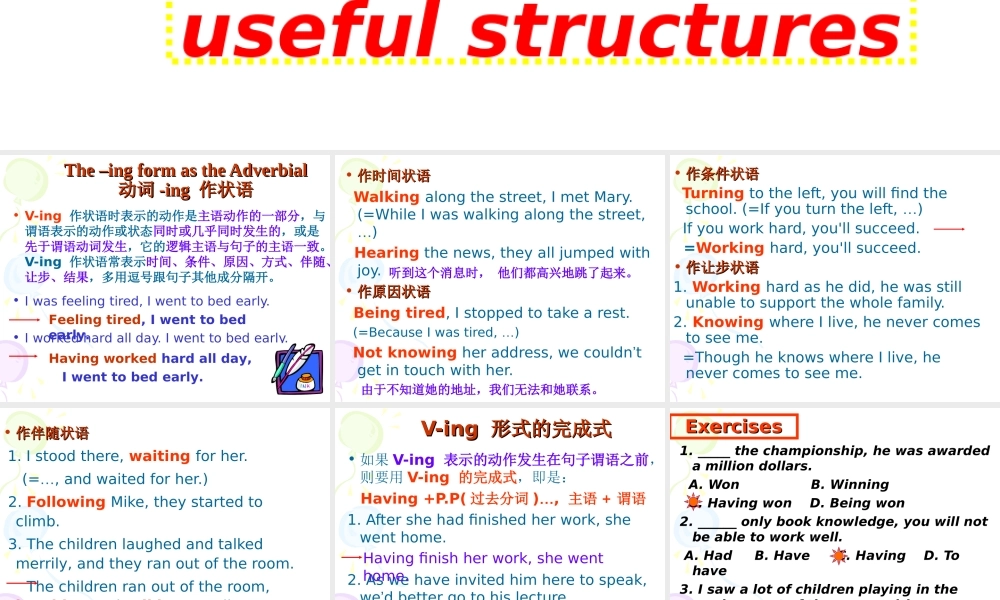Unit5 learning about language---discovering useful structuresThe –ing form as the AdverbialThe –ing form as the Adverbial动词动词 -ing -ing 作状语作状语• V-ing 作状语时表示的动作是主语动作的一部分,与谓语表示的动作或状态同时或几乎同时发生的,或是先于谓语动词发生,它的逻辑主语与句子的主语一致。V-ing 作状语常表示时间、条件、原因、方式、伴随、让步、结果,多用逗号跟句子其他成分隔开。• I was feeling tired, I went to bed early.• I worked hard all day. I went to bed early. Feeling tired, I went to bed early.Having worked hard all day, I went to bed early.• 作时间状语作时间状语 Walking along the street, I met Mary. (=While I was walking along the street, …) Hearing the news, they all jumped with joy. • 作原因状语作原因状语 Being tired, I stopped to take a rest. (=Because I was tired, …) Not knowing her address, we couldn’t get in touch with her. 由于不知道她的地址,我们无法和她联系。听到这个消息时, 他们都高兴地跳了起来。• 作条件状语作条件状语 Turning to the left, you will find the school. (=If you turn the left, …) If you work hard, you'll succeed. =Working hard, you'll succeed. • 作让步状语 作让步状语 1. Working hard as he did, he was still unable to support the whole family.2. Knowing where I live, he never comes to see me. =Though he knows where I live, he never comes to see me.• 作伴随状语 作伴随状语 1. I stood there, waiting for her. (=…, and waited for her.) 2. Following Mike, they started to climb. 3. The children laughed and talked merrily, and they ran out of the room. The children ran out of the room, laughing and talking merrily.那些孩子们跑出房间,愉快地笑着、说着。 • 如果 V-ing 表示的动作发生在句子谓语之前,则要用 V-ing 的完成式,即是: Having +P.P( 过去分词 )…, 主语 + 谓语1. After she had finished her wor...



